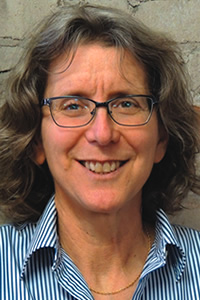
BioCycle September 2016
Nora Goldstein
An article in the current issue of Urban Land, “Rising Tides: Designing Resilient Amenities for Coastal Cities,” notes that the “collision of forces between the need for resilience and the cost of it is producing sparks of creativity …. The intrinsic economic value of resilient design will help drive its acceptance.”
The article uses several storm resilience projects as case studies. For example, in New Orleans, a project in the 1,300-acre City Park is designed to maintain the park’s natural drainage with “curbless parking, bioswales, and improved soils that hold more water.” We emphasize that last “spark of creativity,” as the tried and true way to get soils to hold more water is via use of compost, including composted digestate.
Another project highlighted is Hunter’s Point South Park, a $350 million, 30-acre mixed-use development with a 10-acre city park along the Queens (New York City) waterfront. The mixed-use complex includes affordable and workforce housing, retail space, and a school. The park sits between the complex and the waterfront. “Waterfront green space, such as the Hunter’s Point Park’s buffer role for the massive new mixed-use project, illustrates a reversal of earlier development strategies that pushed projects to the water’s edge to maximize a property’s views, user access, and income potential,” explains the article.
Okay, now our sparks of creativity are ignited, all loaded with intrinsic economic value! Picture this: Soils in the park and its gardens amended with compost made from the organic wastes produced by the households, school and business establishments in the complex. An on-site anaerobic digester processes the organics to generate biogas to help power the complex — and serve as a 24/7 baseload power source if storms knock out electricity from the grid. Digestate can be composted on-site as well. Greywater captured from the mixed-use complex can be used to irrigate plantings, and/or recirculated to flush toilets in the buildings. Rooftops on the buildings can accommodate solar panels and green roofs to help with storm water management.
When we gather together next month at BioCycle REFOR16, October 17-20 in Orlando, Florida, we can keep adding to that list of sparks. And the best part, as you’ll see first hand at BioCycle REFOR16: All of these solutions are ready to go, and are proven to work because examples abound. As demand rises for these solutions, the BioCycle Community is primed to deliver.
The idea for this month’s cover blurb, Solutions Driven Organics Recyclers, is derived in large part from articles that fill the pages of this issue. It started when we visited Ag Choice, an organics recycling company in Andover, New Jersey (page 26). Owners Jay and Jill Fischer are quintessential entrepreneurs who, when presented with an opportunity, agree to tackle it, then figure out the solution. The Fischers’ can-do spirit shines through in Dr. Eric Handler and Mike Haller (page 42), who with their colleagues in Orange County, California, are addressing the public health issue of hunger by accelerating donation of wholesome excess food. It’s evident in the American Biogas Council and its members who have spent the past 2.5 years developing a digestate standard and certification program (page 31) to be unveiled at BioCycle REFOR16.
The BioCycle Community stands ready as cities and communities pivot to adopt climate and socioeconomic-resilient practices. Our calling card? Solutions Are Us.









